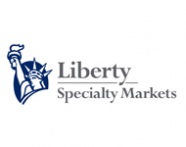What is parametric insurance and why is it different?

Expectations of insurers are changing. Businesses and consumers are becoming less tolerant of gaps in cover. In an increasingly digital world, they expect fast payouts, irrespective of whether complex loss adjustment is required. Jean-Christophe Garaix, explains why insurance innovation is needed and how Liberty Mutual Re is leading the charge.
In developed markets, businesses increasingly want protection against losses that traditional insurance policies are only just starting to cover, like the loss of a crop following a major weather event; or supply chain delays and the disruption that follows. In emerging markets, the problem is less likely to be due to traditional insurance being inadequate – it is more likely to be due to the fact that cover is not available and if it is, it is unaffordable – this means that 90% of catastrophic losses are often uninsured.
Let’s take a look at the after-effects of Hurricane Dorian:
- Hurricane Dorian reached Category 5, the strongest Atlantic hurricane landfall on record to hit the Bahamas, with maximum sustained winds of 185 mph and up to 30 inches of rainfall.
- Dorian made two landfalls in the Bahamas; Abaco Islands and Grand Bahama. In the Abaco Islands, one of the most severely affected areas, about 90% of houses and infrastructure were damaged or destroyed (Mercy Corps, 2019).
- The human toll was considerable: deaths of 61 people; about 1,000 people missing, and more than 2,000 people without shelters (Reliefweb, 2019).
- Total economic losses were estimated at USD1.2 billion, with public and private insurance expected to cover less than half (Aon, 2019).
The impact of uninsured losses
The Bank of International Settlements calculates that in developing markets, the worst natural catastrophes can permanently reduce a country’s GDP by almost 2%. In developed markets the impact is smaller, but still significant. The Bank of England, for example, downgraded its expected 2018 first quarter GDP growth from 0.4% to 0.3%, following the impact on businesses of the ‘Beast from the East’ – the cold weather snap that hit the UK in the winter of 2018. In that time period, Ocado reported a £1.5m hit to profits due to supply chain delays, Debenhams reported a 1% fall in underlying sales due to reduced footfall and forced store closures and the construction sector lost 1% (£1.6bn) of annual output.
In a market where excess capacity is pursuing diminishing returns, losses on this scale, while devastating for those affected, present an opportunity for re/insurers to satisfy regulators, governments and consumers that alternative risk-transfer mechanisms can be an effective and appropriate solution. Parametric products can make a significant contribution to reducing the gap.
What is parametric insurance and why is it different?
Parametric insurance differs to a traditional indemnity policy in that it covers the insured for the probability of a pre-defined event happening. Essentially, it is an agreement to make a pre-determined payment if a triggering event occurs which is expected to cause a loss. Weather is one of the simplest parametric triggers as data is readily available from independent third parties and accuracy is improving all the time.
The combination of high-resolution satellite technology and more weather stations has made it possible for grids to be recalculated to a few meters square, providing a very high level of accuracy and reliability for farmers and their insurers, no matter how remote the location. For example, Météo-France re-calculates the wind speed and direction once a second across each kilometer. The resulting combination of high volumes of accurate, authenticated, data with phenomenal computing power, means basis risk (the risk that index measurements do not match an individual insured’s actual losses) is much reduced.
In the case of crop insurance, the parameters underpinning the contract might include temperature, precipitation, wind speed, hours of sunshine, or biomass (measured by satellite imagery). So, if there were a drought, or rainfall is 20% above a five-year average in a given period – then the thresholds in the contract are breached and a payment is triggered automatically, without the need for the insured to prove a specific loss related to that event.
In developed countries, parametric solutions are not meant to replace traditional indemnity policies, but to complement them. Their primary appeal is where insureds are especially vulnerable to catastrophic events, like hurricanes, floods, or wildfires.
What has been achieved so far? Big data, advancing analytical techniques, and improved modelling capability are what underpin the development of parametric insurance. With no loss adjusting to fall back on, the models have to be as accurate as possible to reflect the risk fairly for all parties.
Liberty Mutual Re has been active in parametrics since 2010. Today we have a team of six actuaries and data scientists. They are based in Paris and their focus is on analysing the risks and building the models on which the new parametric crop covers depend. The team also works closely with the Global Risk Solutions Innovation Lab in Boston, launched earlier this year.
In the Caribbean, we have developed a proprietary wind model to help banana producers. Previously insurance was not available, because of the high probability of hurricane losses and the lack of local loss adjusting capability. Launched in 2019, it provides protection for producers for the first time ever, for tens of millions of dollars of sum insured.
For the past two years in Europe, we have offered parametric cover for crop producers against a range of environmental challenges – precipitation, humidity, hours of sunshine etc. Based on our experience in this market, the product is being adapted for Latin America. The appeal to insureds is not just the insurance protection provided, but also the modelling service that accompanies it. The model can assess what yield farmers can expect based on the parameters in the model, providing an opportunity for producers to intervene if production is not on track.
This bundling of service with insurance means that the distributor maintains contact with their clients – typically the large agricultural co-operatives that represent farmers, their risk managers and brokers – all through the year and is in a constant learning and feedback loop. The opportunity to interview farmers, assess satellite imagery and review data means that we can segment the market, refine the offering and provide value at every level.
What next for parametrics?
The appetite for parametric insurance is building. In emerging markets, Liberty’s focus is on developing parametric cover to bridge the gaps in cover. It is delivering results such as providing disaster relief via the Caribbean Catastrophe Risk Insurance Facility and the African Risk Capacity - the African Union’s weather insurance scheme.
In developed markets, the focus is on complementing traditional policies. In 2018, Germany suffered a 0.5% drop in GDP when drought meant cargo could no longer be transported down the Rhine. A policy is now available which provides supplementary cover on the business interruption supply chain and property losses that might arise should the Rhine become impassable again.
In the future, parametric insurance will play a key role helping companies – and the brokers who support them – more effectively protect themselves against the full range of exposures they face. For parametrics insurance to work, insurers need access to an agreed data source which is transparent and consistent from a trusted third party. Harnessing the value of the data available means that we can deliver against the changing needs of our insureds.
If you would like to speak to someone at Liberty about Parametric insurance, CLICK HERE, leave a mssage and youTalk-insurance will pass your enquiry on.
Authored by Liberty
About Liberty
Liberty Specialty Markets offers specialty and commercial insurance and reinsurance products across key UK, European, Middle East, US and other international locations.
We provide brokers and insureds with a broad range of products through both the Company and Lloyd’s markets and have over 1,700 staff in approximately 65 offices. Liberty Specialty Markets was established in September 2013 bringing together Liberty’s company, syndicate and reinsurance operations into one combined operation, composed of three business units: Commercial, Specialty, and Reinsurance (Liberty Mutual Re). This integrated approach means brokers and clients can benefit from our global reach and operating efficiencies.
Liberty Specialty Markets is part of global insurer, Liberty Mutual Insurance Group, a diversified global insurer, formed in 1912 and headquartered in Boston, Massachusetts. Liberty Mutual is the 5th largest global insurer based on 2017 gross written premium, with over 50,000 employees in 30 countries and economies around the world. Our purpose is to help people embrace today and confidently pursue tomorrow. The promise we make to our customers throughout the world is to provide protection for the unexpected, delivered with care. We achieve this by offering a full range of personal, commercial, and specialty Property & Casualty insurance coverages. Our customers’ trust has earned us the 68th spot on the Fortune 100 list of largest corporations in the U.S., based on 2017 revenue.

